Nebraska During the Cretaceous Period
During the Cretaceous, the climate of Nebraska changed several times. During most of the Cretaceous, the region was inundated by the Western Interior Seaway. Below are maps, photos, and descriptions of the various Cretaceous units within Nebraska.
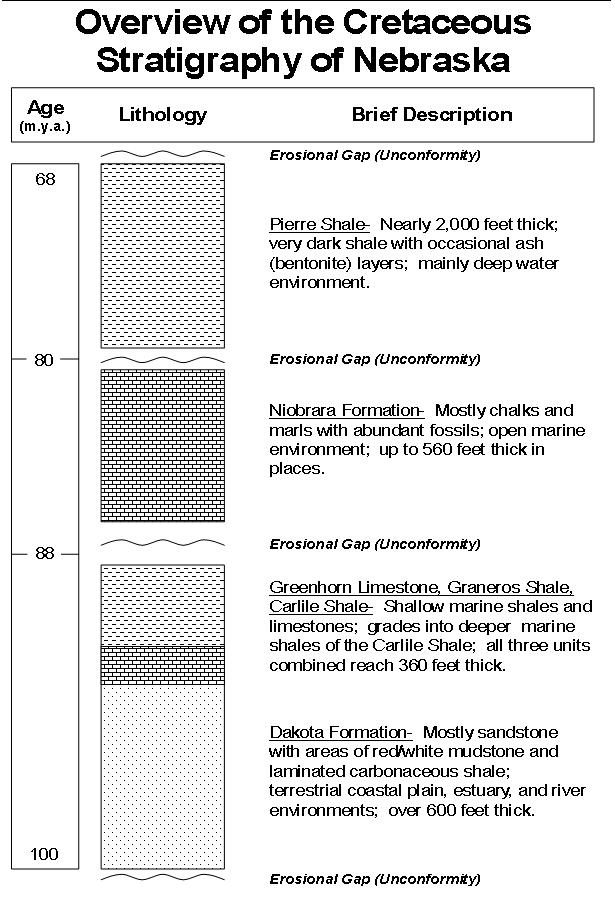

Dakota Formation
The Dakota Formation is the oldest preserved Mesozoic strata in Nebraska; it was deposited during Albian and Cenomanian time. This unit contains a mixture of sandstones, mudstones, siltstones, and shales. The environment of deposition was a coastal plain/estuary system that was bisected by meandering rivers. These ancient river channels delivered sediment to the eastern side of the Cretaceous Western Interior Seaway. During the time when the Dakota Formation was deposited, the climate was much warmer and eastern Nebraska received about three times more annual rainfall than today (~100 inches per year). Below is a photo taken of the Dakota Formation from southern Nebraska.
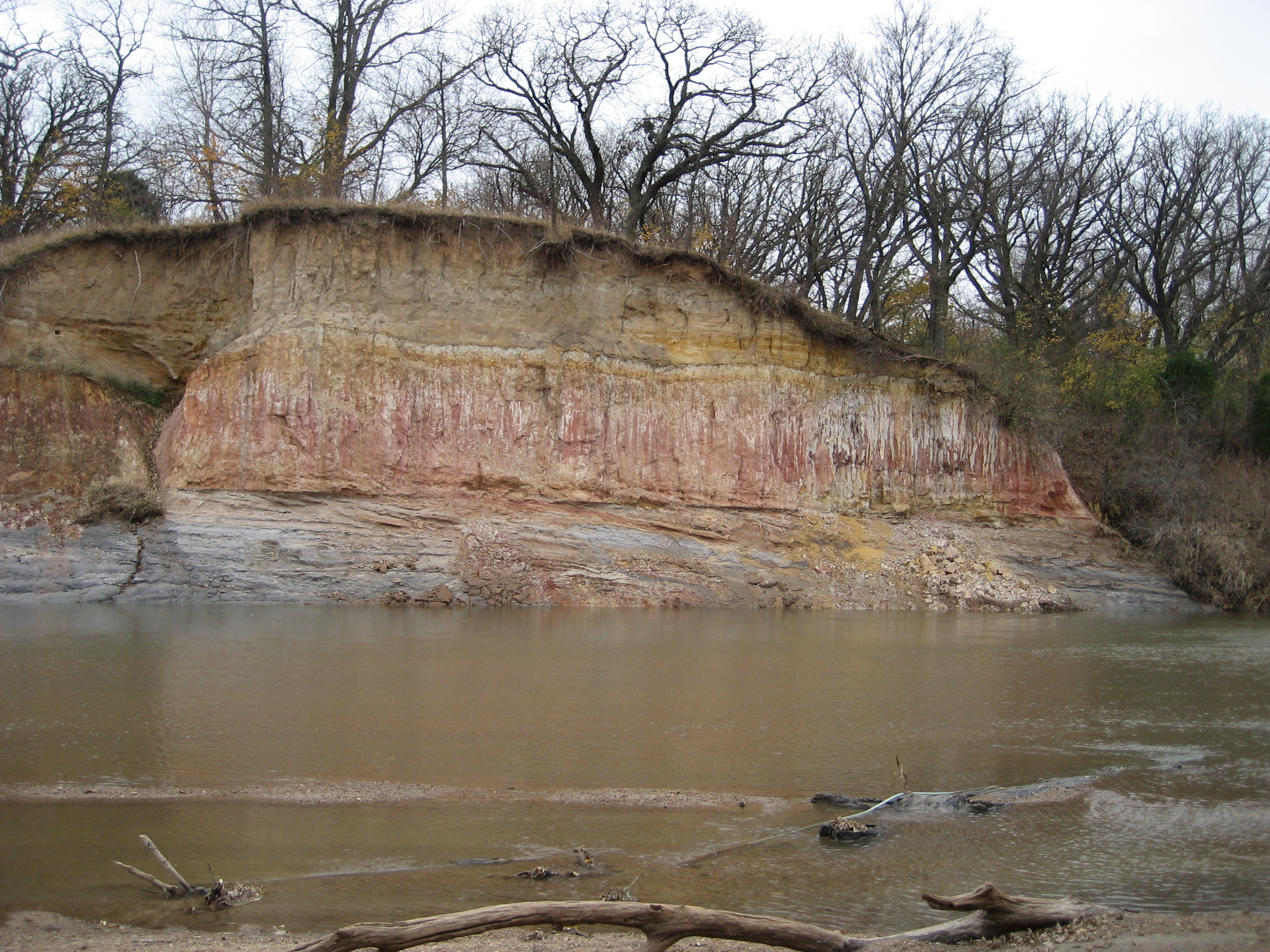 |
A photo of the Dakota Formation near Fairbury, Nebraska. The inclined layers at the base are estuary deposits; the red and white mudstone in the middle is a series of ancient soils (paleosols); the upper unit is sandstone deposited by ancient coastal rivers that were flowing into the Western Interior Seaway. |
Greenhorn Limestone, Graneros Shale, and Carlile Shale
Overlying the Dakota Formation is the Greenhorn Limestone, Graneros Shale, and Carlile Shale. In Nebraska, these units are often combined into one mapping unit due to their limited lateral extent across Nebraska. West of this region (i.e. Colorado, Wyoming, etc.), these units become much thicker and are separated into distinct mapping units. All three of these rock units were deposited in open marine waters. These formations consist of limestones and shales with abundant marine fossils. These units were deposited during a major expansion phase of the Western Interior Seaway (Cenomanian-Turonian), when a large portion of North America became flooded with marine waters. At this time, the Arctic Ocean was connected to the Gulf of Mexico.
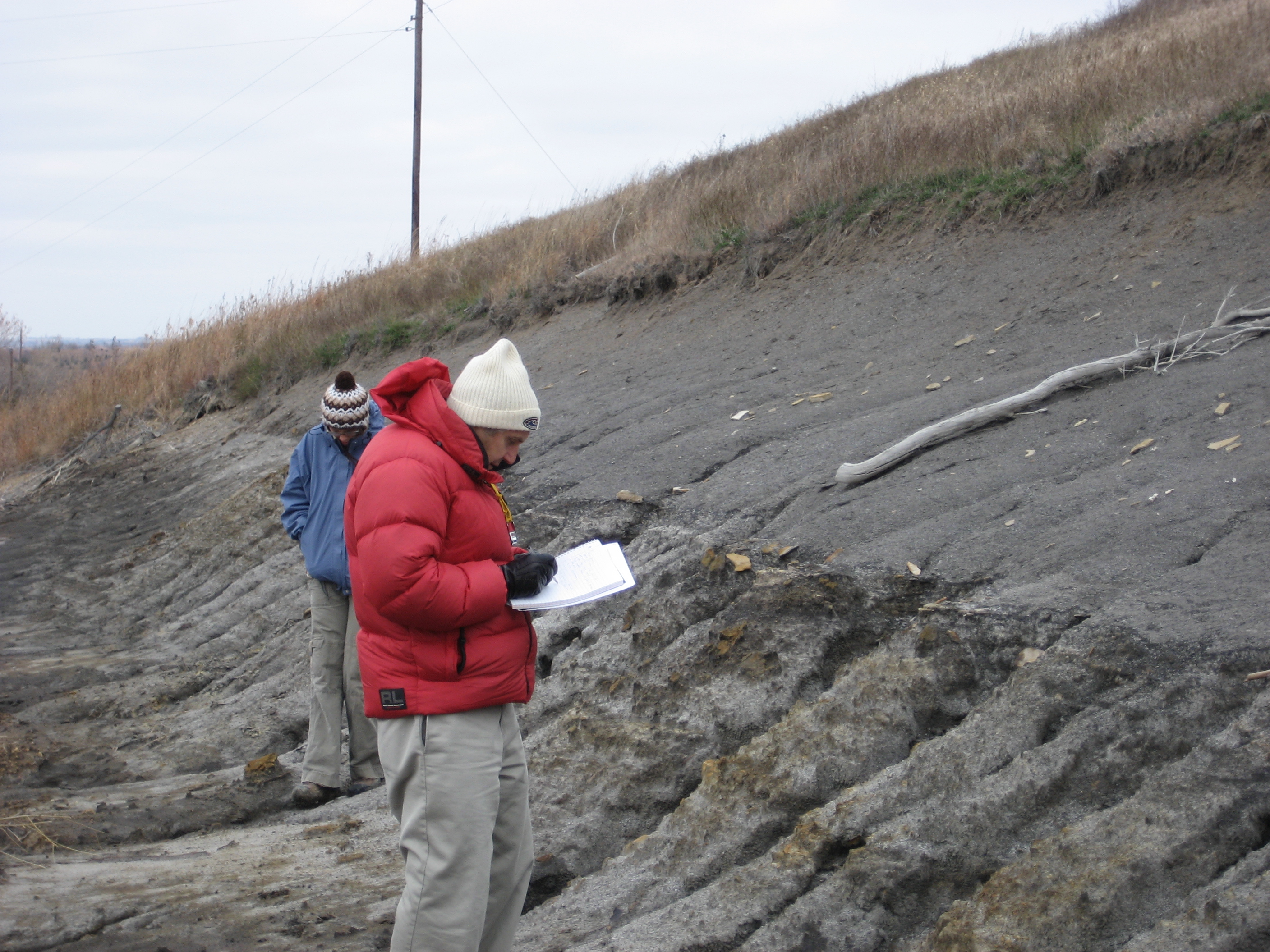 |
An outcrop of Graneros Shale south of Fairbury, NE along Highway 15. Note the dark gray/black shale. This unit contains various marine fossil fragments including shells and fish bones. The Graneros Shale would have been deposited in fairly deep marine waters away from major land masses. |
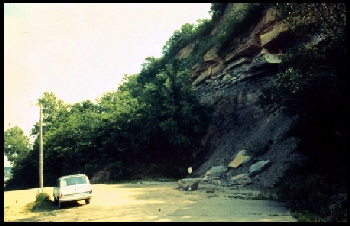 |
An outcrop of Graneros Shale (bottom) overlain by Greenhorn Limestone (top). This picture is from Duane A. Eversoll http://snr.unl.edu/Data/landslides.asp and was taken at Ponca State Park. |
Niobrara Formation
The Niobrara Formation (often called the Niobrara Chalk) was deposited during the Late Cretaceous about 80-88 million years ago. This unit is a chalk because it consists mostly of ancient marine plankton. Other marine fossils, including shells and fish bones also have been found in the Niobrara Formation. Similar to the Greenhorn Limestone, the Niobrara Formation represents a time of expansion for the Western Interior Seaway across North America. These chalks were most likely deposited in open marine waters far away from any terrestrial land.
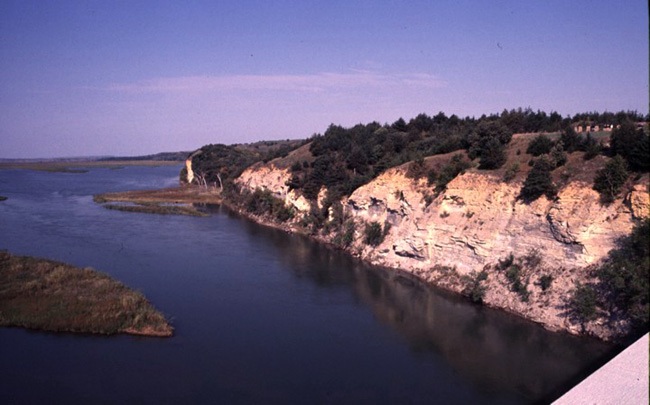 |
An outcrop of the Niobrara Formation from Niobrara State Park. Photo by Dr. Harmon Maher http://maps.unomaha.edu/maher/ |
Pierre Shale
The Pierre Shale is the youngest Cretaceous unit in the state of Nebraska. It was deposited during the Campanian and Maastrichtian (~70-80 million years ago). This unit consists of dark gray/black shales that were deposited in deep marine waters. Within the shale unit are several distinct ash layers (bentonites), which have been used to help date the formation. Also preserved in the Pierre Shale are ammonites (related to the modern-day Nautilus and large marine reptiles such as Plesiosaurs. Similar to the underlying units, the Pierre Shale represents an expansion of the Western Interior Seaway corresponding to very high global sea levels.
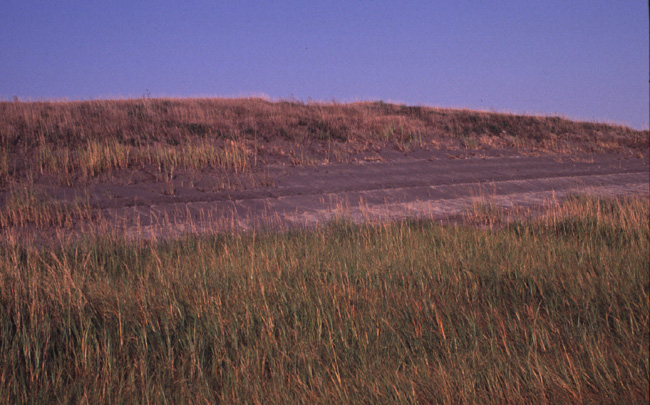 |
An outcrop of the Pierre Shale near Niobrara State Park. Photo by Dr. Harmon Maher http://maps.unomaha.edu/maher/ |
For more information about geology locations in Nebraska (from many geological time periods), see Maher, H., Engelmann, G., and Shuster, R., (2003 and references therein), Roadside Geology of Nebraska, Mountain Press Publishing Company, 264p.